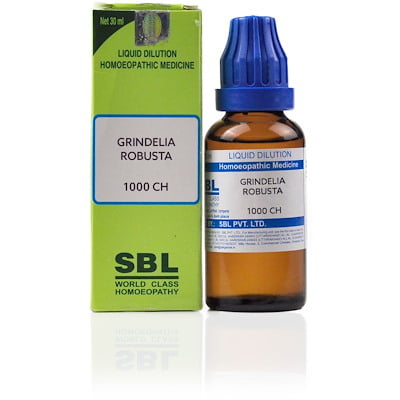Description
GRINDELIA ROBUSTA – GRINDELIA ROBUSTA
Source: Rosin-wood (GRINDELIA)
Both Grindelia robusta and Grindelia squarrosa have been used for the symptoms here recorded. There is practically no difference in their action, although the G. Squarrosa is credited with more splenic symptoms, dull pains and fullness in left hypochondrium; chronic malaria; gastric pains associated with splenic congestion. Induces paralysis, beginning in extremities Its action is shown on the heart first quickening, then retarding it. Acts on the cardio-pulmonary distribution of the pneumo-gastric in dry catarrh (Tart Emetic in muco-purulent). Produces a paresis of the pneumo-gastric, interfering with respiration. Smothering after falling asleep. Asthmatic conditions, chronic bronchitis. Bronchorrhea with tough mucus, difficult to detach. Raises the blood pressure. Nausea and retching of gastric ulcer. Sugar in urine. An effective antidote to Rhus-poisoning, locally and internally; also for burns, blisters, vaginal catarrh and herpes zoster. Hyperchlorhydria when attended with asthmatic and other neurotic symptoms. Hyperaemia of gastric mucous membrane with difficult respiration.
Head
–Feels full, as from quinine. Pain in eyeballs, running back to brain; worse, moving eyes. Pupils dilated. Purulent ophthalmia and iritis.
Respiratory
–An efficacious remedy for wheezing and oppression in bronchitic patients. The sibilant rales are disseminated with foamy mucus, very difficult to detach. Acts on the pulmonary circulation. Asthma, with profuse tenacious expectoration, which relieves. Stops breathing when falling asleep; wakes with a star, and gasps for breath. Must sit up to breathe. Cannot breathe when lying down. Pertussis, with profuse mucous secretion (Coccus). Bronchorrhea, with tough, whitish, mucous expectoration. Sibilant rales. Weak heart and respiration. Cannot breathe lying down. Cheyne-Stokes respiration.
Spleen
–Cutting pain in region of spleen, extending to hips. Spleen enlarged (Ceanoth; Carduus).
Skin
–Rash, like roseola, with severe burning and itching. Vesicular and papular eruptions. Herpes zoster. Itching and burning. Poison oak (locally as a wash). Ulcers, with swollen, purplish skin.
Relationship
–Compare: Tart-emet. Eriodictyon; Lach; Sanguinar.
Dose
–Tincture in 1 to 15 drop doses, also lower potencies.
Disclaimer: The description given here is only for educational purpose, which has been extracted from multiple books related to homeopathy; and must not be considered as substitute to any medical consultation/prescription of qualified doctors. It must not be used for any medico-legal purpose. Medicines Mall or any of its associates, directors, employees will not be responsible for the authenticity of the contents or for any mistake.
Patient must take proper advice of qualified doctors before taking any dose of this medicine, as self medication may be harmful.




Reviews
There are no reviews yet.